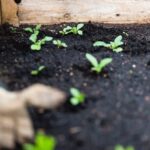Permaculture chickens and their benefits are an essential component of creating a sustainable and integrated ecosystem within a permaculture garden. In permaculture design, every element serves multiple functions, and chickens are no exception. By incorporating the principles of permaculture, such as utilizing natural materials and fostering symbiotic relationships between components, the presence of chickens can greatly contribute to garden maintenance and soil fertility while also providing other valuable assets.
Chickens play a crucial role in a permaculture system by aiding in garden maintenance, controlling pests, and fertilizing the soil with their droppings. Their omnivorous diet allows them to forage for insects and weeds, reducing the need for chemical pest control and manual weeding.
Additionally, their manure provides valuable nutrients to the soil, contributing to its overall health and fertility. By integrating chickens into a permaculture garden, it is possible to create a mutually beneficial environment where each component supports and enhances the others.
To fully harness the potential of permaculture chickens, careful consideration must be given to their interaction with other elements in the garden. This includes designing appropriate spaces for chicken foraging areas, ensuring their safety from predators, and incorporating them into the garden layout in a way that maximizes their impact on garden maintenance.
By taking these factors into account, it is possible to achieve a harmonious coexistence between chickens and other elements such as a dog run or garden shed within the permaculture system.
Building a Sustainable Dog Run in a Permaculture Setting
When it comes to designing a dog run that complements a permaculture garden, there are several important factors to consider. One of the key principles of permaculture is using natural and sustainable materials, and this can also be applied to creating a dog run. Utilizing natural materials such as untreated wood, bamboo, or recycled composite materials for fencing and pathways can help minimize the environmental impact while providing a safe and secure space for your dog.
In addition to materials, plantings can play a crucial role in creating a sustainable dog run within a permaculture setting. Incorporating native plants and grasses around the perimeter of the dog run can serve multiple purposes, such as providing shade, attracting beneficial insects, and preventing soil erosion. These plantings can also contribute to the overall aesthetic and biodiversity of the garden while enhancing the well-being of your dog.
Ensuring the safety and well-being of your dog while preserving the garden ecosystem is essential when integrating a dog run into a permaculture design. This involves careful consideration of potential hazards such as toxic plants, chemicals, or other harmful substances that may be present in the garden. By creating physical barriers or designated paths for your dog within the garden space, you can protect both your pet and the surrounding vegetation from accidental damage.
| Factors to Consider | Tips |
|---|---|
| Materials for fencing | Utilize natural and sustainable materials such as untreated wood or recycled composite materials |
| Plantings | Incorporate native plants and grasses around the perimeter for shade, biodiversity, and soil erosion prevention |
| Safety measures | Create physical barriers or designated paths to protect both pets and surrounding vegetation from harm |
Integrating a Garden Shed Into a Permaculture Design
In permaculture design, the inclusion of a garden shed serves multiple purposes that contribute to the overall sustainability and functionality of the system. A garden shed provides storage space for tools, equipment, and supplies, allowing for better organization and maintenance of the permaculture garden.
Additionally, it can serve as a workspace for various gardening tasks such as seed starting, potting, and tool maintenance. When integrating a garden shed into a permaculture design, it is essential to consider sustainable design ideas that align with the principles of permaculture.
Sustainable Design Ideas
When planning the construction or renovation of a garden shed in a permaculture setting, it is important to prioritize sustainable materials and practices. Utilizing reclaimed or repurposed materials for the construction of the shed can reduce environmental impact and minimize waste. Additionally, incorporating energy-efficient features such as natural lighting and proper insulation can further enhance the sustainability of the garden shed.
Incorporating the Shed Into Garden Design
To maintain harmony within the permaculture system, it is crucial to integrate the garden shed seamlessly into the overall garden design without disrupting its natural flow. This can be achieved by carefully selecting a location for the shed that minimizes its visual impact on the landscape while ensuring convenient access for gardening activities. Furthermore, planting native vegetation around the shed can help blend it into its surroundings and promote biodiversity within the garden ecosystem.
Preserving Permaculture Principles
While designing and integrating a garden shed into a permaculture system, it is important to uphold key principles such as minimizing waste, maximizing resource efficiency, and promoting ecological harmony. This may involve implementing rainwater harvesting systems for use in watering gardens or installing renewable energy sources to power lighting and tools within the shed. By prioritizing sustainable practices in both construction and operation, a garden shed can become an integral part of a thriving permaculture environment.
Planning the Layout of a Permaculture Garden With Chickens and Dog Run
When planning the layout of a permaculture garden that includes chickens and a dog run, several important factors need to be considered to ensure a harmonious coexistence between the garden, animals, and human activities. The first consideration is designing garden beds and pathways that can accommodate the presence of chickens and a dog run.
This involves creating designated spaces for the chickens to forage without damaging delicate plants in the garden beds, as well as ensuring that pathways are accessible for both human and animal use.
Another crucial aspect of planning the layout is optimizing space and resources. Utilizing vertical space for gardening through trellises or vertical planters can help maximize growing areas while keeping them out of reach from chickens. Likewise, utilizing fencing or partitioning techniques can create separate areas for dogs to exercise without compromising the designated garden spaces.
Furthermore, it’s essential to consider how the presence of chickens and a dog run can contribute to the overall functionality of the permaculture garden. For instance, integrating chicken foraging areas with specific garden beds could provide natural pest control benefits by allowing chickens to consume insects and pests harmful to plants.
Incorporating natural elements such as water features, trees, and shrubs into the layout can also enhance the ecosystem within the permaculture garden. These elements serve multiple purposes by providing shade, habitat for beneficial insects, and supplemental food sources for both chickens and dogs. By carefully planning the layout of a permaculture garden with chickens and a dog run, it becomes possible to create an integrated system where all components work together to achieve sustainability and productivity.
| Aspect | Consideration |
|---|---|
| Garden Beds | Create designated spaces for chickens to forage without damaging delicate plants. |
| Optimizing Space | Utilize vertical space with trellises or fencing techniques. |
| Natural Elements | Incorporate water features, trees, and shrubs into the layout. |
Creating a Functional and Aesthetically Pleasing Space for Permaculture Chickens
Designing a Chicken Coop
When designing a chicken coop in a permaculture setting, it is important to prioritize natural materials, sustainable construction methods, and functionality. The coop should provide adequate protection from predators while also allowing for ventilation and natural light. Additionally, incorporating elements such as green roofs or living walls can contribute to the aesthetic appeal of the coop while promoting biodiversity.
Utilizing Chicken Foraging Areas
Permaculture principles emphasize the importance of utilizing natural behaviors and interactions within the ecosystem. Creating designated foraging areas for chickens within the garden allows them to fulfill their natural instinct to scratch and peck while also contributing to soil fertility through their droppings. This integration of chicken activities with garden maintenance can result in a more balanced and productive system.
Incorporating Natural Elements
Incorporating natural elements such as native plants, trees, shrubs, and other landscaping features can enhance the visual appeal of the space while providing additional benefits for both the chickens and the overall garden ecosystem. For example, planting fruit trees or perennial bushes within or around the chicken area can provide food sources for the chickens as well as contributing to a diverse and productive garden landscape.
By focusing on creating a functional and aesthetically pleasing space for permaculture chickens, it is possible to not only enhance the well-being of the birds but also maximize their positive impact on the garden ecosystem. Through thoughtful design and consideration of natural principles, chickens can become valuable allies in creating a thriving permaculture garden.
Maximizing the Benefits of Permaculture Chickens in Garden Maintenance
Permaculture principles emphasize the importance of creating self-sustaining ecosystems where every element serves a specific purpose. When it comes to garden maintenance, integrating chickens into a permaculture system can be incredibly beneficial. Here are some ways to maximize the benefits of permaculture chickens in garden maintenance:
- Pest Control: Chickens are natural foragers and will actively search for insects and pests in the garden. Their constant pecking and scratching help control pest populations without the need for chemical pesticides.
- Weed Management: Chickens can also assist in weed management by eating young, tender weeds before they have a chance to mature and spread throughout the garden.
- Soil Fertilization: As chickens roam through the garden, they naturally fertilize the soil with their droppings. This contributes to increased soil fertility and overall health of the garden beds.
Implementing strategies that allow chickens to fulfill their role in garden maintenance is essential for ensuring a thriving permaculture ecosystem. By integrating their natural behavior into gardening tasks, you can harness their impact while promoting sustainable practices.
Incorporating chicken activities into routine garden maintenance tasks is crucial for optimizing their contribution to the permaculture system. This includes allowing them access to different areas of the garden at specific times and using their natural behaviors to your advantage. With careful planning and consideration, permaculture chickens can truly become valuable allies in maintaining a healthy and productive garden.
Ensuring Safety and Security for Chickens and Dogs in a Permaculture Setting
When creating a permaculture garden with chickens and a dog run, ensuring the safety and security of all animals involved is crucial for the success of the system. Here are some important measures to consider:
1. Implementing predator-proof enclosures: Build secure fencing or coop structures to protect chickens and dogs from potential predators such as foxes, raccoons, or birds of prey. Use hardware cloth with small mesh sizes to prevent intrusions from digging animals or climbing predators.
2. Creating separate areas for each animal: Designate specific zones for chickens and dogs within the permaculture garden to prevent conflicts and ensure the well-being of both species. This can be achieved through the use of fencing, pathways, or natural barriers that delineate their respective spaces.
3. Utilizing natural deterrents: Integrate natural methods such as companion planting with aromatic herbs or flowers that repel certain pests or predators. For example, marigolds can deter insects harmful to crops, while certain plants like lavender may help deter pests that could harm chickens.
By taking these safety and security measures into consideration, a permaculture garden can provide a harmonious environment for chickens, dogs, and plants to thrive together in a sustainable manner.
Conclusion
In conclusion, the integration of chickens, a dog run, and a garden shed into a permaculture garden offers numerous benefits for achieving harmony and sustainability within the ecosystem. By understanding the principles of permaculture and leveraging the natural behaviors of chickens and dogs, individuals can create a balanced and productive environment that supports both human needs and the needs of the animals involved.
It is essential to emphasize the careful planning and thoughtful design required to ensure the success of this integrated approach. Considering factors such as safety, resource optimization, and mutual well-being of all elements within the system is crucial for creating a harmonious permaculture garden. By implementing sustainable design ideas, utilizing natural materials, and incorporating measures to protect against potential conflicts or risks, individuals can achieve balance and sustainability in their permaculture gardens.
As we continue to explore the potential of permaculture principles in designing integrated ecosystems, it is important to remember the interconnectedness of all elements within a garden. By embracing these principles and applying them to our own gardening practices, we have the opportunity to create thriving environments that benefit not only ourselves but also the animals that contribute to the overall health and productivity of the ecosystem.
As such, we encourage readers to consider how they can implement these ideas in their own gardens and explore new ways to achieve harmony and sustainability in their permaculture designs.

Welcome to my gardening blog! I am passionate about plants and enjoy sharing my knowledge and experiences with others. In this blog, I will write about everything related to gardening, from tips on how to get started to updates on my own garden projects.





